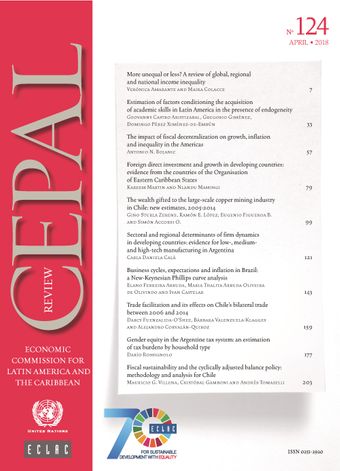-
Sectoral and regional determinants of firm dynamics in developing countries: Evidence for low-, medium- and high-tech manufacturing in Argentina
- Source: CEPAL Review, Volume 2018, Issue 124, Oct 2018, p. 121 - 142
- Spanish
-
- 04 Oct 2018
Abstract
This study analyses the determinants of firm dynamics in developing countries, using Argentina as an illustrative case. It explains firm entry and exit at the regional level, distinguishing three groups of manufacturing activities: low-, medium- and high-tech. The study finds that both region- and sector- specific determinants explain firm dynamics, but the impact is not homogeneous across sectors. In particular, for low-tech industries, there is a need for explanatory variables as a proxy for the specificities of developing economies (poverty, informal economy and idle capacity). There is also evidence of a core-periphery pattern according to which agglomeration economies and previous entries/exits have different effects in core and peripheral regions. These results are relevant for policymakers in developing countries, who should take into account not only the specificities of such economies, but also the regional heterogeneity both in terms of the level of development and industrial composition within the country.





